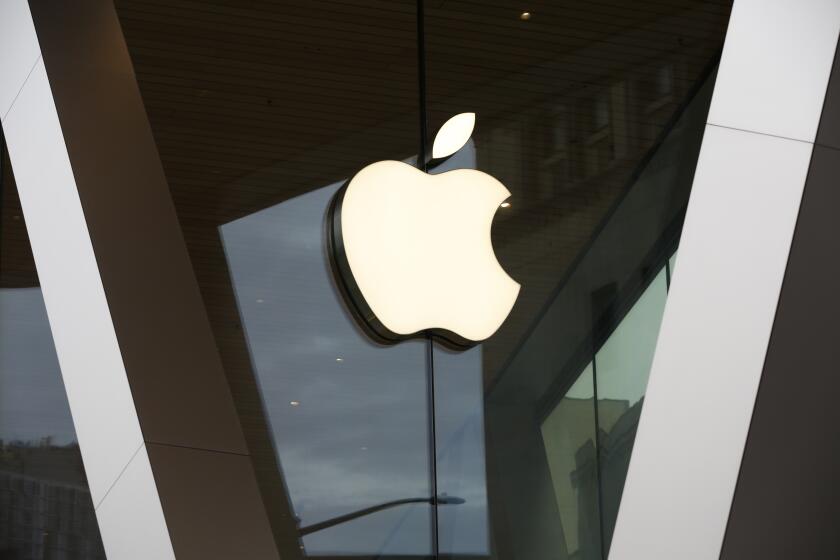Consumer prices jump in January
- Share via
Reporting from Washington — Forget deflation. U.S. consumer prices jumped in January for the second month in a row, and it wasn’t just soaring costs for gasoline and food. Americans are beginning to pay more for clothes, rent and travel, new data released Thursday showed.
Rising prices are not welcomed by consumers, but they’re acceptable for Washington policymakers, up to a point, anyway. That’s because higher inflation lowers the government’s real cost of paying the huge interest charges on the national debt. And, because higher inflation usually translates into a cheaper dollar, U.S. exports should become more affordable — and competitive — in overseas markets.
What’s more, an uptick in inflation may help bring down unemployment. Wage growth tends to track inflation, and with consumer prices barely climbing last year, that made it all the harder for many employers to give pay raises or add workers. Higher inflation could give companies more pricing power, conceivably allowing them to increase wages more easily.
“This confirms my view that policymakers want to see higher inflation in this country,” said Jack Ablin, chief investment officer of Harris Private Bank in Chicago.
Throughout last year, Federal Reserve Chairman Ben S. Bernanke expressed worries about deflation, that the U.S. could be sliding into a period of broadly falling prices that could choke economic growth and business investments as it did to Japan’s economy, particularly during the 1990s.
But Bernanke may soon be facing pressure from the other end: Inflation hawks may see the latest data as more reason for the Fed to curtail its bond purchases and easy-money policies, fearful that pumping more money into the system would be like adding yeast to the economic dough.
For now, there’s little indication that inflation is about to spiral out of control anytime soon. Thursday’s report from the Bureau of Labor Statistics showed the U.S. inflation index jumping 0.4% in January from the prior month, but consumer prices overall were still up just 1.6% from a year earlier.
The latest pickup in inflation was driven largely by higher fuel prices, as it was in December. Commodity prices, including grains, also have been soaring because of stronger global growth and a series of events that have constrained supplies.
The surge in food prices has contributed to the political unrest in Egypt and the Middle East, and has also stirred inflation worries in China and other primarily emerging economies.
Food accounts for a much smaller share of consumer spending in the U.S. and other developed nations. And many experts, including Fed policymakers, tend to put more weight on the core inflation rate, which excludes volatile food and energy items. By that measure, inflation still looks tame, up 1% over the last 12 months.
Still, even core inflation in the U.S. went up 0.2% in January from December, the highest monthly gain since October 2009. January’s rise included a 1% jump in apparel prices, reflecting increases in producers’ costs and import prices. Airfares and public transportation costs also rose sharply. That indicates higher oil prices are affecting the cost for other goods and services.
What’s more, companies have warned that increasing material costs, among other things, could mean even higher prices for consumers in the months to come.
“Core consumer inflation is edging back up,” Chris Rupkey, chief financial economist at Bank of Tokyo-Mitsubishi in New York, said in a research note Thursday. “We can throw the old idea of economic weakness and deflation in the dustbin.”
Most analysts don’t think inflation this year will tick much higher than the Fed’s informal target of 2% But the inflation rates of the last two months were more than double that pace. Rapidly rising commodity prices often spill over into core goods and services, and history has shown inflation can jump suddenly in an economic expansion.
Lyle Gramley, a former Fed governor, doubts a similar scenario is unfolding this time. Although the pace of economic recovery has accelerated, growth remains fairly moderate, he says. The nation’s high unemployment rate, currently 9%, will suppress wages, holding down inflation. And Gramley questions whether retailers and other businesses will be able to pass on cost increases to customers.
Nor does he see much to be happy about in the latest run-up in inflation. Its main driver is energy costs, he said, not economic growth or greater use of factory capacity and workers.
“No, no, no,” he said. “This particular source of inflation wouldn’t be welcome.”
More to Read
Inside the business of entertainment
The Wide Shot brings you news, analysis and insights on everything from streaming wars to production — and what it all means for the future.
You may occasionally receive promotional content from the Los Angeles Times.











